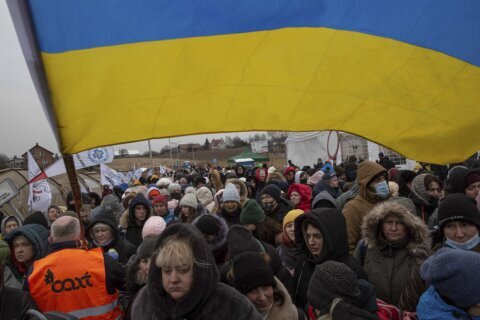For weeks there had been warnings: Russian troops are massing near the border. President Vladimir Putin intends to seize control of Ukraine. The invasion is coming. Be ready.
But how could that be possible? It had been generations since most anyone in this part of the world had heard the thunder of invading tanks. This was the age of McDonald’s, of Netflix. For many Ukrainians, it simply seemed impossible. Even President Volodymyr Zelenskyy, now the unshaven, T-shirt-wearing leader who rallies his people from fortified bunkers, said in late January that the threat seemed no worse than a year earlier.
And then, on Feb. 24, it happened.
Missiles struck targets across Ukraine. Tanks and soldiers streamed across the border. Russian forces, it seemed, would soon reach the capital, Kyiv.
Instead, nimble, heavily armed Ukrainian soldiers and volunteers protected their country ferociously, slowing the advance of Russia’s mechanized army. Putin’s frustration grew, and with it the brutality of Russian forces, who began to bombard cities, killing the same people the Russian president claimed he was protecting.
Every day, more and more people fled the country. Every day, the death toll climbed.
Thursday marks one month since the invasion was launched. Associated Press photographers have been there every day.
___
In the hours after the attack, the slow drip of Ukrainians fleeing their homeland turned into a torrent. They filled trains and buses. Their cars clogged the roads. The violence shocked Ukraine, as the first civilian buildings were destroyed by Russian attacks.
___
Fear spread as the ferocity of the invasion became increasingly clear. A child was killed in the soon-to-be besieged city of Mariupol. Ukrainian forces began hammering the invaders. Tens of thousands of people fled the country, both Ukrainians and the many foreigners who had come to the country to work, study, go on vacation. Hospitals moved underground to escape attacks, trying to protect the most vulnerable.
___
Ukraine’s civilian volunteer forces grew as thousands of weapons were distributed to people who just days before had been teachers or engineers or janitors. Some volunteers died just days into the fighting. Volunteers began distributing food, diapers, medical supplies and more.
___
By the beginning of March, the United Nations estimated that at least 1 million people had fled Ukraine. In less than one week, more than 2% of the country had left. Most headed first to Lviv, in western Ukraine, which had seen few Russian attacks. Families were increasingly divided.
___
Mariupol, a key port city on the Azov Sea, was quickly besieged by Russian forces. People struggled with no electricity or running water. Russian bombardments grew ever more fierce. Hospitals became scenes of anguish as doctors worked feverishly to save a steady tide of men, women and children wounded in the incessant shelling. Many times, their injuries were just too grievous.
___
From Lviv, most refugees have gone to nearby Poland, but others have taken refuge in Romania, Moldova, Hungary, Slovakia and elsewhere. Unlike the cities that have been under continual attack, Lviv has largely been able to carry on as usual, even offering its internally displaced visitors a break from the violence with free tours to introduce them to the city’s rich culture.
The city hasn’t buried its head in the sand, however. In preparation for possible attacks, officials have closed the important national museum, wrapped historically important statues in protective coverings and shielded some of their beautiful churches’ stain-glassed windows. And they’ve converted a theater into an aid center where the displaced can find clothing and other necessities donated by residents.
___
Across the country, the war has taken a terrible toll on civilians. Many Ukrainians now live underground, in bomb shelters and subway stations; others receive military training to help defend their country. Thousands of people have fled across the Irpin River, on the outskirts of Kyiv. The United Nations now estimates more than 3.5 million people have left the country.
___
With residents unable to bury their dead because of the nonstop shelling in the besieged city of Mariupol, authorities eventually began burying them in mass graves. A maternity hospital also came under attack. At least one pregnant woman died shortly after her baby was born dead. Another survived and gave birth days later.
___
Now, one month after the invasion began and amid tenuous cease-fire talks, the Russians are upping their attacks and Ukrainian defense forces are fighting back more fiercely than ever. With their lives at stake in the unabating violence, thousands more residents flee, and the death toll keeps on rising.
___
Copyright © 2024 The Associated Press. All rights reserved. This material may not be published, broadcast, written or redistributed.






